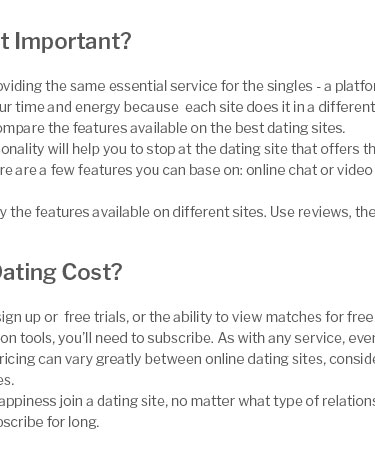hook up cloud made simple and secureWhen people say “hook up cloud,” they usually mean connecting applications, data, networks, and teams so information flows safely and systems work as one. Done well, it boosts speed, reliability, and insight. Core concepts you should knowThink integration, not isolation. Your goal is a cohesive mesh of services that share identity, policy, and observability. - Identity first: Centralize users, apps, and machine identities with least privilege.
- Network as a guardrail: Private links, segmented subnets, and policy-aware gateways contain risk.
- Data gravity matters: Move compute to data when feasible; cache smartly when not.
- Automation is the default: Use templates and pipelines to make the right thing the easy thing.
- Observability everywhere: Trace across boundaries to find issues fast.
Culture shapes technical integration too; learn from ecosystems like montreal hookup culture to see how networks form, scale, and adapt. Step-by-step connection blueprint- Define the outcomes: performance, resilience, compliance, or cost. Clarity prevents overengineering.
- Choose an architecture pattern: hub-and-spoke, service mesh, or event-driven streams.
- Establish identity and access: SSO, federation, and role-based access.
- Lay down networking: private connectivity, DNS, and name resolution strategy.
- Design data integration: batch, streaming, and change data capture with schemas.
- Automate builds: infrastructure as code, secrets management, and Git-based workflows.
- Add observability: logs, metrics, traces, and alerts with clear ownership.
- Secure and validate: policy-as-code, vulnerability scans, and drift detection.
- Control costs: tagging, budgets, and rightsizing guardrails.
Identity and accessFederate identities through a central provider, map groups to roles, and segment privileges by environment and app. Rotate keys and prefer short-lived credentials. Networking choicesPrefer private connectivity for sensitive workloads, pair it with security groups and network ACLs, and enable DNS split-horizon to steer traffic correctly. Data integration- Batch: Reliable, simple, suitable for non-real-time analytics.
- Streaming: Event buses and pub/sub for near-immediate reactions.
- CDC: Mirror operational changes into analytics or caches.
Automation and IaCUse templates to provision networks, identities, and services consistently. Store secrets in a managed vault and reference at deploy time. ObservabilityAdopt a standard trace context across services, centralize logs, and correlate with metrics. If you can’t see it, you can’t fix it. Architectural patterns that work- Hub-and-spoke: Central controls with isolated workloads. Great for multi-team setups.
- Zero-trust overlay: Authenticate and authorize every request; minimize implicit trust.
- Event-driven: Decoupled producers/consumers; scales independently.
- Hybrid bridge: On-prem to cloud via private links and consistent identity.
Security and compliance essentials- Encrypt in transit and at rest; pin to managed keys where possible.
- Guardrails with policy-as-code; block risky resources pre-deploy.
- Continuous posture management and least-privilege reviews.
- Data classification and tokenization for sensitive fields.
Default deny, explicitly allow. Common pitfalls and how to avoid them- Ad-hoc networking: Fix with standardized subnets, CIDR plans, and peering rules.
- Secret sprawl: Centralize in a vault; prohibit plaintext in repos.
- Tool chaos: Converge on a small, vetted set of services and patterns.
- Unowned alerts: Attach each alert to an on-call owner and remediation guide.
- Data drift: Enforce schemas and use contracts between services.
Practical use cases- Unifying customer profiles across CRM, analytics, and support tools.
- Connecting factories to cloud analytics for quality and yield insights.
- Linking mobile apps to serverless backends with low-latency APIs.
- Cross-cloud redundancy for critical services.
Regional rollouts can start small-pilot a single workload, then expand, similar to how local tech communities link up, such as hook up montgomery al style initiatives that grow by trust and repeatable wins. Tools and services to consider- Identity: SSO, SCIM provisioning, workload identity.
- Networking: Private links, transit gateways, service mesh.
- Data: ETL/ELT, CDC, lakehouse catalogs.
- Automation: Terraform-like IaC, pipelines, policy checks.
- Observability: Centralized logs, traces, SLO dashboards.
Key takeaway: Standardize patterns, automate everything, and measure outcomes. FAQWhat does “hook up cloud” actually mean?It means connecting apps, data, identity, and networks so services interoperate securely and reliably, using common guardrails and automation. How do I connect on‑prem systems to the cloud safely?Use private connectivity, segment networks, federate identity, and enforce policy-as-code at deployment to prevent misconfigurations. Which data transfer approach should I choose?Batch for simplicity and large loads, streaming for near-real-time, and CDC when you must mirror operational changes with minimal impact. How can I avoid vendor lock‑in while hooking up services?Abstract with open standards, keep data in portable formats, and automate via tools that can target multiple clouds. What should I monitor after everything is connected?Monitor service SLOs, end‑to‑end latency, error rates, cost anomalies, and security posture; correlate traces, metrics, and logs. Is a no‑code integration platform enough?It can accelerate simple flows, but critical paths benefit from IaC, version control, and explicit policies for reliability and security.
SummaryStart small, standardize, and scale. Prioritize identity, private networking, automated deployments, and rich observability. With clear patterns, hooking up cloud services becomes predictable, auditable, and fast.

|




















